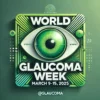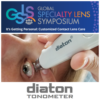Important Alert for ER/ED: Tono-pen Covers Latex Allergy
Cases reported “Latex Hypersensitivity”
Latex allergy associated with the latex tip covers on the Tonopen
“Latex-Free” Tonometry Option is lower on the page:

Abstract: Latex allergy associated with the latex cover on the TonoPen.
PURPOSE: To describe signs and symptoms of latex allergy associated with the use of the TonoPen in a patient with severe latex allergy.
METHODS: Case report. In a 13-year-old girl with a history of severe latex allergy, intraocular pressure was obtained with a TonoPen.
RESULTS: TonoPen covers that contained latex induced agitation, bilateral conjunctival injection, eyelid erythema, and eyelid edema in this latex-allergic patient. Use of a fingertip from a sterile nonlatex glove provided accurate intraocular pressure measurements with the tono-pen, without a local or systemic reaction.
CONCLUSION: In patients with latex allergies, TonoPen covers that contain latex may induce a substantial local and systemic reaction.
Hospitals are seeking for “latex-free” tonometry option – Solution is here:
IOP though Eyelid
with transpalpebral & scleral tonometer Diaton
visit: www.diaton.com

DISCUSSION:
When IOP is measured through the Upper Eyelid & Sclera with Diaton tonometer (BiCOM Inc.,) vs touching/applanating the Cornea with Tono-pen or Goldmann – IOP results obtained with Diaton tonometer are already independent of corneal properties and do not need to be adjusted.
Goldmann applanation tonometry (GAT) is the gold standard for measuring IOP and most probably will continue to be so into the future. However, its limitations were obvious from the start and include the substantial effects of several eye variables such as axial length, curvature, rigidity and corneal thickness. Also, in some eyes, especially those with corneal problems (such as diseases, trauma, haze, corneal opacities, leucomas, etc.) and surgery, taking measurements is not easy.
DIATON unique “Latex-Free” tonometry device is irreplaceable in ER/ED setting.
The non-invasive technique with trans-palpebral and trans-scleral DIATON Tonometer, eliminates the risk of infecting or scratching the cornea and no numbing drops are required to measure the pressure, without recovery time needed + there is no need to adjust IOP for corneal irregularities such as central corneal thickness (CCT) with additional device that is not likely to be present in ER/ED setting – pachymeter.
For example: many older or post LASIK patients have thinner corneas as a result all invasive, corneal tonometry devices such as Tono-pen or Goldmann will inaccurately provide lower IOP results, unlike scleral Diaton Tonometer, which is not influenced by cornea; with all this making the screening with Diaton tonometer quick and complete – making users much more efficient.
Having Diaton tonometer in ER/ED is like having 2 devices in 1….: Tonometer + Pachymeter
Watch Demonstration Video below:


![[⚡ ER/ED ALERT] Latex allergy associated with Tono-Pen Tonometer latex covers – See Solution Inside:](https://diaton.com/wp-content/uploads/2017/08/Tonopen_diaton_tonometer2.png)








